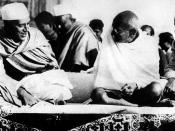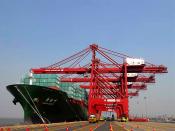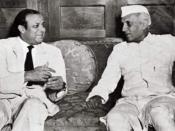Boyko Iaramov
Introduction to International Relations
Professor Bond
The Role of Decision Making in the Pre-Crisis Period of India
(15 March, 1959 - 7 September, 1962)
More than thirty years have passed since the dramatic cling of arm in the remote Himalayan region of the Sino-Indian border. This Time gap seems to be appropriate for a correct reexamination of the conflict. The account of India's attempt to find balance with China, ever since the Kongska Pass incident in 1959 until the attack of 1962, is not merely a fact sheet that we can brows and toss and toss away. In stead we have to link each idea to the event and causes that might have played a role in the conflict.
Ever since 1959 the border problem between Asia's biggest two nation-states has been picking up speed at a threatening speed. The year 1962 was the unfortunate year for India which knocked out any possibility of understanding between China and India.
Of course, such an act of terror could have not started without some kind of the reason, whatever it may be. The chronological order of pre-crisis decisions taken India's authorities are of great importance.
The role of the decision-makers before the time of the armed conflict had a big significance for India's position on political and economic matters in the continent of Asia. A major figure in India's decision making was Jawaharlal Nehru, leader of the Congress Party, head of the Planning Commission and chief spokesman of the government in Parliament. These titles not only made him an important nationalistic figure but also Gandhi's appointed heir and a 'major architect of India's political institutions' (Brecher, 1959). Krishna Menon, 'the controversial defense minister consulted in almost every issue' along with Pandit Govind Ballabh Pant was also a figure of great...


